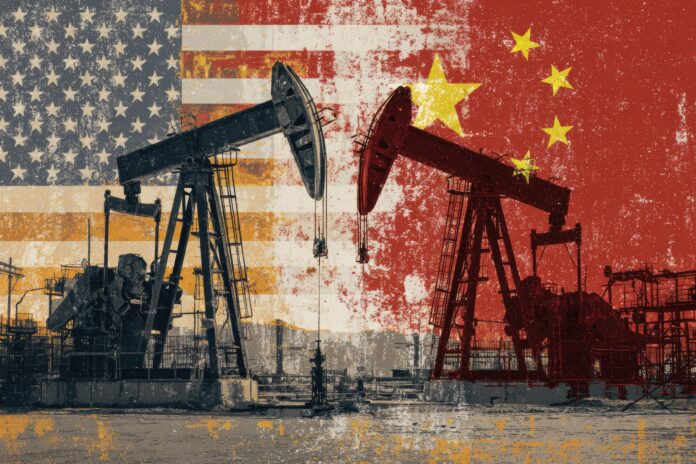Why Analysts Warn Trump Trade Wars Threaten the Entire US Energy Sector
Trump trade wars have moved back into the center of debate as the possibility of renewed tariffs looms over the energy landscape. Across the United States, industry analysts are sounding the alarm: from oil and gas to solar and wind, the entire US energy sector faces growing risks. Trade disputes, tariffs, and escalating tensions with key partners could disrupt supply chains, inflate costs, stifle innovation, and imperil much-needed investments.
Ripple Effects on Oil and Gas Producers
At the forefront, the oil and gas industry stands to absorb a significant blow. Critical infrastructure projects, such as pipelines and refineries, rely heavily on imported steel and aluminum. Since the implementation of tariffs beginning in 2018, energy companies have reported billions of dollars in increased costs. According to the American Petroleum Institute, these trade policies make domestic projects less competitive and slow the pace of progress. Most importantly, higher expenses can discourage new drilling, reduce exports, and ultimately impact jobs throughout the sector.
Energy markets also face increased volatility. Besides that, retaliatory tariffs or boycotts from China and other trading partners threaten US oil and liquefied natural gas exports, which have enjoyed unprecedented growth in recent years. Markets thrive on predictability, and ongoing trade frictions breed uncertainty that can deter investment for years to come.
Solar, Wind, and the Surge in Renewables
It’s not just fossil fuels under threat from Trump trade wars. Solar energy, one of America’s fastest-growing industries, is intimately linked with international trade. The majority of solar panels and critical components—such as inverters, cells, and specialty metals—are produced in Asia, particularly China and Taiwan. Therefore, broad tariffs on these imports increase costs for US solar developers and utility-scale projects, while also narrowing options for consumers seeking affordable clean energy solutions. According to the Solar Energy Industries Association (SEIA), solar installations dropped sharply after the imposition of Section 201 tariffs in 2018, and new trade disputes could exacerbate the issue.
Wind projects face similar challenges. Large wind turbine components are frequently sourced from European and Asian manufacturers. Disrupted access to affordable, high-quality parts limits expansion, places new projects at risk, and stalls the momentum behind meeting aggressive US emission reduction targets.
Supply Chain Disruptions Add Complexity
Most industries rely on complex, international supply chains—but the energy sector’s dependencies run particularly deep. Whether it’s specialty mining equipment, advanced batteries, or key components for grid modernization, trade turmoil can produce sudden shortages and price spikes. Companies face delays in project timelines, higher financing costs, and reduced confidence among investors. In a recent S&P Global Commodity Insights report, industry stakeholders warned that unpredictable trade policy makes it difficult to plan infrastructure development, ultimately restricting US competitiveness.
Innovation and Investment Stagnate
The US energy sector’s ability to innovate depends on cross-border trade and collaboration. Tariffs raise costs and reduce the flow of both materials and new ideas. Therefore, startups and established players alike may shelve projects they once hoped would revolutionize the industry—from advanced solar technologies to new forms of carbon capture. Without reliable access to diverse suppliers and customers, the pace of technological progress inevitably slows. The effect is cumulative: fewer investments today mean less opportunity and employment growth tomorrow.
Risks to National Security and Energy Independence
Most importantly, the broader consequences of Trump trade wars stretch beyond economics. US energy security rests on the ability to source equipment and technology needed for stable, resilient infrastructure. Disrupted supply chains can weaken the nation’s response to unrest, natural disasters, or hostile actors. As the US seeks to reduce dependence on overseas energy while growing exports, fractured global relationships can undermine these dual goals. Weak infrastructure and unpredictable access to resources could leave the country exposed to sudden price shocks and shortages, increasing vulnerabilities on multiple fronts.
How US Households and Businesses Are Impacted
Because energy underpins nearly every part of modern life, rising costs, project delays, and scarcity ripple quickly to American households and businesses. Higher prices for gasoline and electricity hit consumers directly. Businesses pass additional energy costs onto customers through price increases and reduced hiring. In regions already struggling with high utility bills, new tariffs could widen economic inequality and limit access to cleaner, cheaper energy options.
Policy Uncertainty: The Biggest Threat?
Beyond tariffs themselves, the unpredictability of trade policy is perhaps the most damaging aspect. Investors demand clarity to commit billions to new energy initiatives. As the 2024 election approaches and the possibility of renewed Trump trade wars hangs in the balance, energy executives, state officials, and community leaders must weigh regulatory headaches and potential for abrupt market changes. Clear, consistent policy is crucial for continued US energy leadership on a global scale.
How the Industry and Policymakers Can Respond
- Diversify supply chains: Invest in domestic manufacturing and foster relationships with a broader set of trade partners.
- Support open trade: Advocate for fair, transparent international agreements that avoid unnecessary tariffs and disruptions.
- Promote policy certainty: Develop forward-looking, bipartisan energy and trade policies that encourage investment and innovation.
- Strengthen resilience: Improve infrastructure and invest in modern, flexible energy systems that can weather global shocks.
What’s Next for the US Energy Sector?
The future of US energy—whether powered by oil, gas, wind, or sunshine—depends on actively mitigating the risks of Trump trade wars. Stakeholders should stay informed by following updates from trusted sources such as S&P Global Commodity Insights, the Solar Energy Industries Association, and the International Energy Agency. Being proactive in advocacy and investment will be essential for ensuring that the US energy sector remains robust, innovative, and capable of meeting the demands of a changing world.




[…] Analysts Say Trump Trade Wars Would Harm the Entire US Energy Sector, From Oil to Solar. US renewables stand to lose big in a trade war, but the sting extends to oil and other energy industries https://cosmicmeta.io/2025/05/31/analysts-say-trump-trade-wars-would-harm-the-entire-us-energy-secto… […]